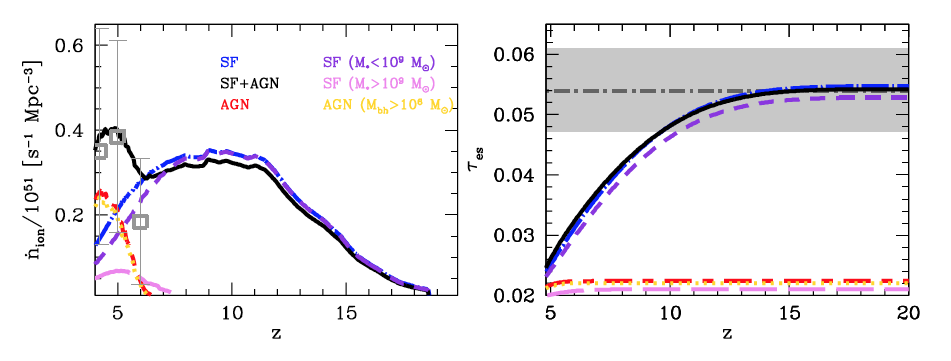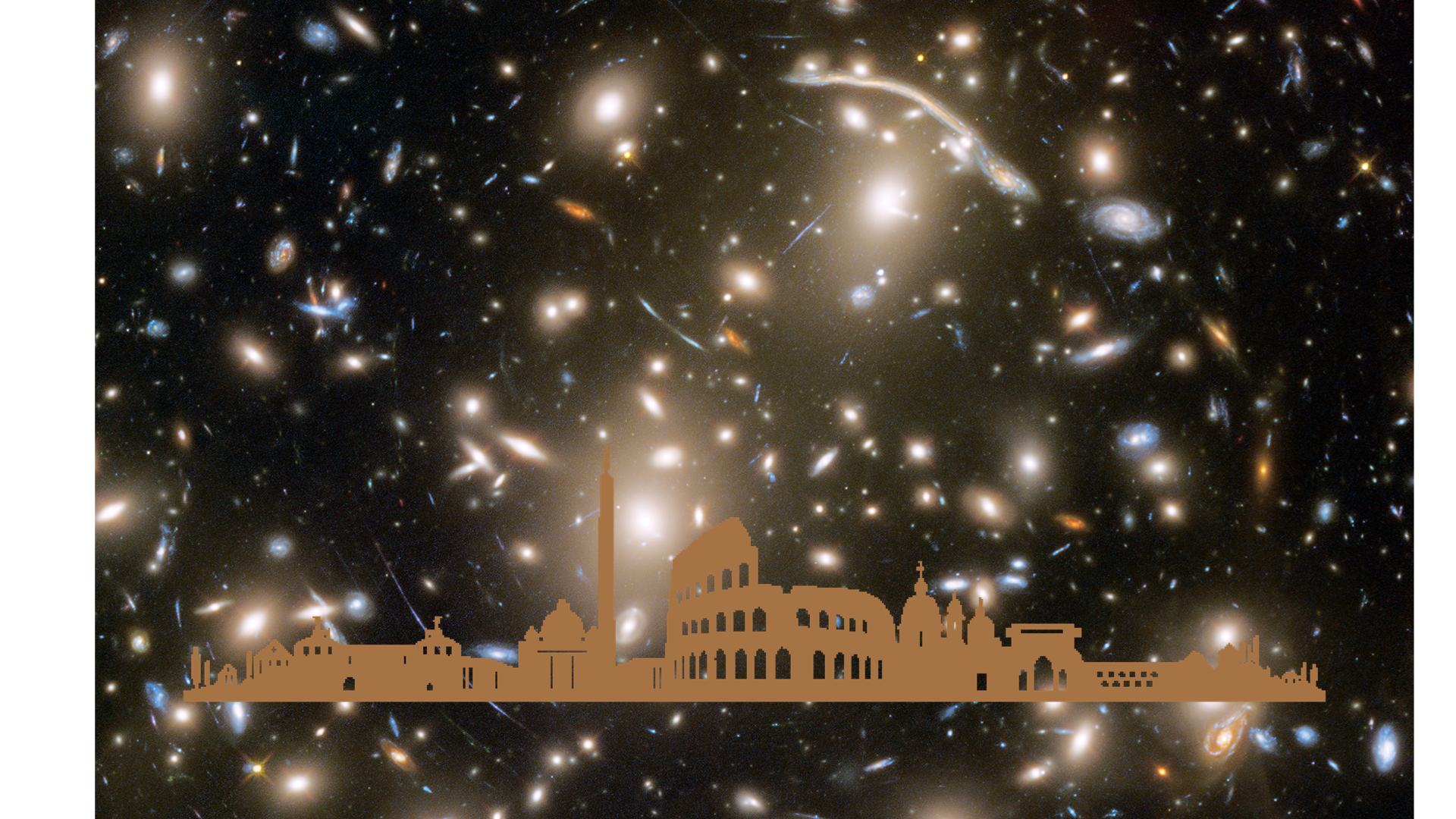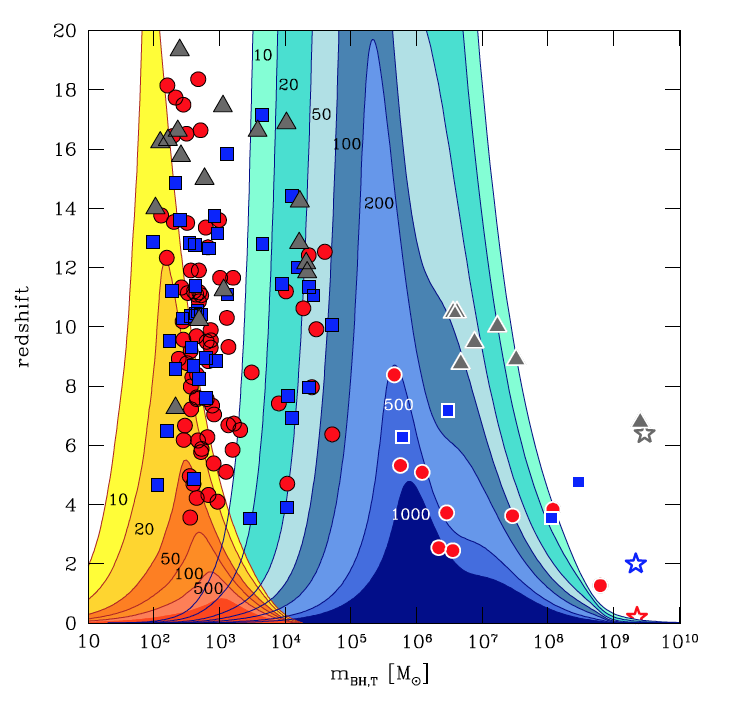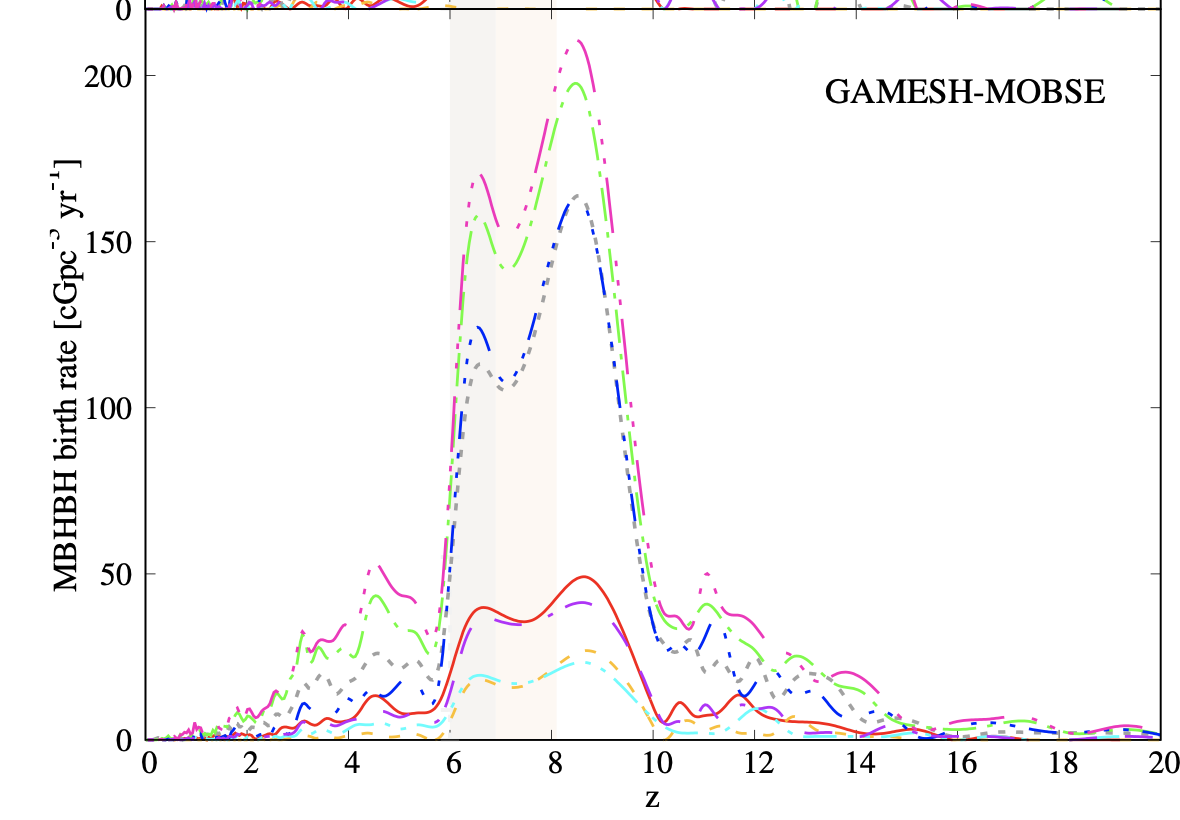
In this work we investigate the properties of the sources that reionized the intergalactic medium (IGM) in the high-redshift Universe. Using a semi-analytical model aimed at reproducing galaxies and black holes in the first ∼1.5 Gyr of the Universe, we revisit the relative role of star formation and black hole accretion in producing ionizing photons that can escape into the IGM. Both star formation and black hole accretion are regulated by supernova feedback, resulting in black hole accretion being stunted in low-mass haloes. We explore a wide range of combinations for the escape fraction of ionizing photons (redshift-dependent, constant, and scaling with stellar mass) from both star formation ( ⟨fsfesc⟩ ) and AGN ( fbhesc ) to find: (I) the ionizing budget is dominated by stellar radiation from low stellar mass ( M∗<10^9M⊙ ) galaxies at z > 6 with the AGN contribution (driven by Mbh>10^6M⊙ black holes in M∗≳10^9M⊙ galaxies) dominating at lower redshifts; (II) AGN only contribute 10−25 per cent to the cumulative ionizing emissivity by z = 4 for the models that match the observed reionization constraints; (III) if the stellar mass dependence of ⟨fsfesc⟩ is shallower than fbhesc , at z < 7 a transition stellar mass exists above which AGN dominate the escaping ionizing photon production rate; (IV) the transition stellar mass decreases with decreasing redshift. While AGN dominate the escaping emissivity above the knee of the stellar mass function at z ∼ 6.8, they take-over at stellar masses that are a tenth of the knee mass by z = 4.
https://ui.adsabs.harvard.edu/abs/2020MNRAS.495.3065D/abstract


